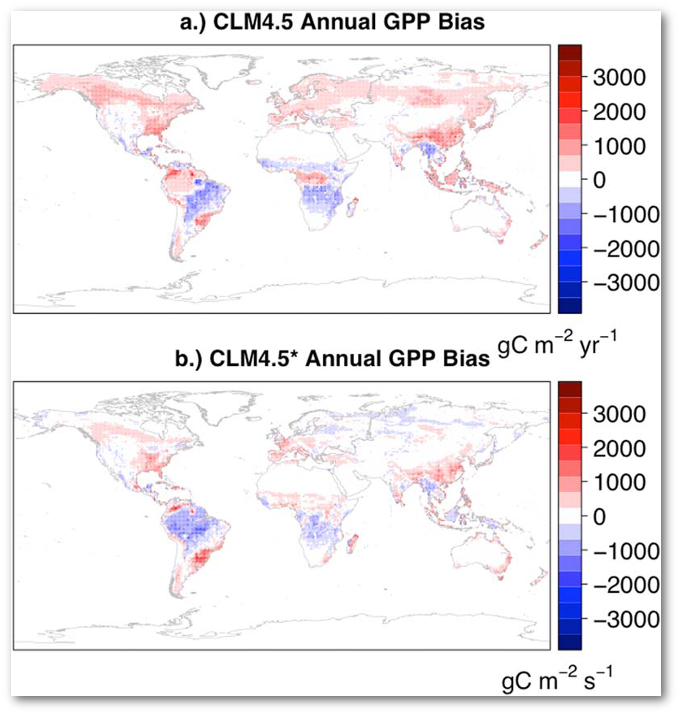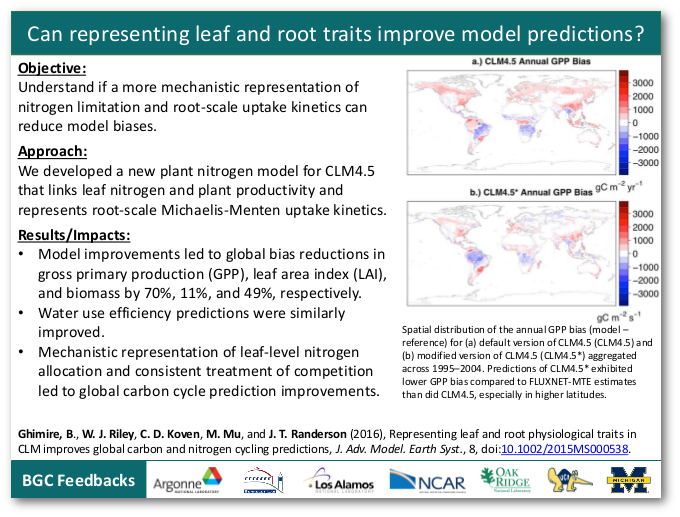Research Highlights
Can representing leaf and root traits improve model predictions?
April 1, 2016
Objective
Understand if a more mechanistic representation of nitrogen limitation and root-scale uptake kinetics can reduce model biases.
Approach
We developed a new plant nitrogen model for CLM4.5 that links leaf nitrogen and plant productivity and represents root-scale Michaelis-Menten uptake kinetics.
 |
Spatial distribution of the annual GPP bias (model − reference) for (a) default version of CLM4.5 (CLM4.5) and (b) modified version of CLM4.5 (CLM4.5*) aggregated across 1995–2004. Predictions of CLM4.5* exhibited lower GPP bias compared to FLUXNET-MTE estimates than did CLM4.5, especially in higher latitudes. |
Results/Impacts
- Model improvements led to global bias reductions in gross primary production (GPP), leaf area index (LAI), and biomass by 70%, 11%, and 49%, respectively.
- Water use efficiency predictions were similarly improved.
- Mechanistic representation of leaf-level nitrogen allocation and consistent treatment of competition led to global carbon cycle prediction improvements.
Ghimire, Bardan, William J. Riley, Charles D. Koven, Mingquan Mu, and James T. Randerson. April 1, 2016. “Representing Leaf and Root Physiological Traits in CLM Improves Global Carbon and Nitrogen Cycling Predictions.” J. Adv. Model. Earth Syst., 8. doi:10.1002/2015MS000538.
